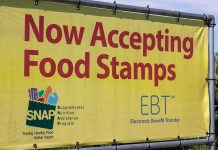
Worried about Medicare Costs? Check Out These Extra Savings Programs
Once you qualify for Medicare, your insurance typically includes coverage for medical care, hospitalization, special procedures, and prescription drugs. However, each person’s premiums vary based on what they paid into Medicare insurance throughout their working years and their coverage level. Although Medicare coverage is often cheaper than private health plans, premiums, copays, and meeting deductibles can add up, putting a financial strain on elderly citizens with fixed incomes.
The government offers four Medicare Savings Programs to help those in need pay or reduce the cost of their Medicare insurance costs. Here is a broad overview of each program and the qualification criteria for receiving aid.
Qualified Medicare Beneficiary (QMB) Program
The Qualified Medicare Beneficiary (QMB) Program helps people pay for Part A and B premiums, deductibles, coinsurance, and copayments for covered items and services. The QMB program has strict income and resource limits for individuals and married couples. These limits change yearly. Currently, they are:
- $1,153 individual monthly income and $1,546 married couple monthly income
- $8,400 individual resource limit and $12,600 married couple resource limit
Note: Limits are typically slightly higher in Alaska and Hawaii. If you live in either place and your income and resources are only a little over the limit, you should apply. You might still qualify for the QMB program.
Those who qualify for the QMB program cannot get billed for services and items except outpatient prescription drugs. In 2022, pharmacists cannot charge you more than $4.00 for any drug covered under Medicare Part D.
Specified Low-Income Medicare Beneficiary Program (SLMB)
The SLMB program helps qualified people pay for Medicare Part B premiums, which cover certain types of doctors’ services, outpatient care, medical supplies, and preventive services. The SLMB program also has income and resource limits. As of 2022, these limits are:
- $1,379 individual monthly income and $1,851 married couple monthly income
- $8,400 individual resource limit and $12,600 married couple resource limit
Like the QMB program, limits in Alaska and Hawaii are slightly higher for the SLMB program.
Qualifying Individual (QI) Program
The QI program is another Medicare Savings Program that helps people pay for their Part B premiums if they also have Medicare Part A. You must apply for QI benefits each year and prove that you have limited income and resources. Benefits are given on a first-come, first-served basis, and the program prioritizes people who received QI benefits in the previous years. As of 2022, the income and resource limits for the QI program are:
- $1,549 individual monthly income and $2,080 married couple monthly income
- $8,400 individual resource limit and $12,600 married couple resource limit
The QI income limits are slightly higher than the SLMB limits, creating the biggest difference between the two programs: if you qualify for Medicaid, you do not qualify for QI program benefits.
Qualified Disabled and Working Individuals (QDWI) Program
The QDWI program provides help with part A premiums for those over age 65 with a disability, who are working, and who lost their Social Security Disability (SSD) benefits and free Part A premiums because they returned to work. As of 2022, the income and resource limits for the QDWI program are:
- $4,615 individual monthly income and $6,189 married couple monthly income
- $4,000 individual resource limit and $6,000 married couple resource limit
To qualify for the QDWI program, you cannot be receiving medical benefits from the state where you live.
If you qualify for Medicare and have limited resources and income to pay your premiums, you might find relief through one of the four programs listed above. Visit the Medicare website and select your state to begin the application process.
Copyright 2022, DailyDig.com













